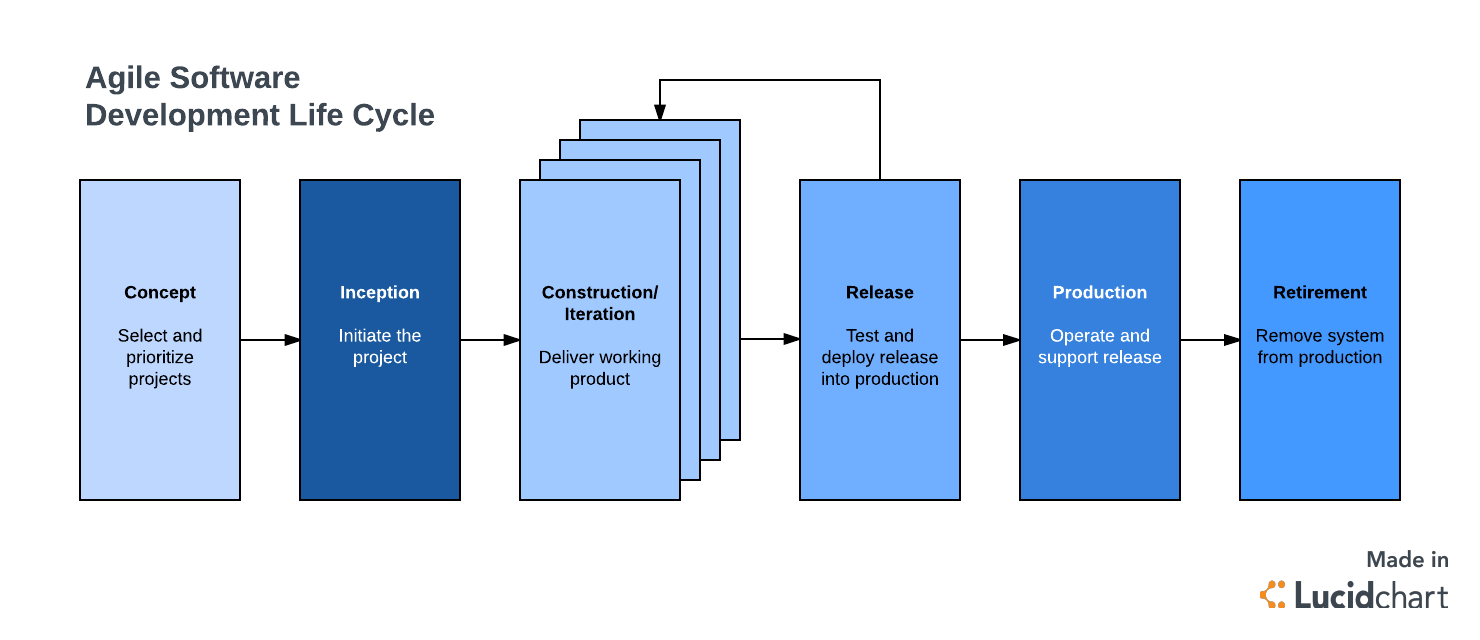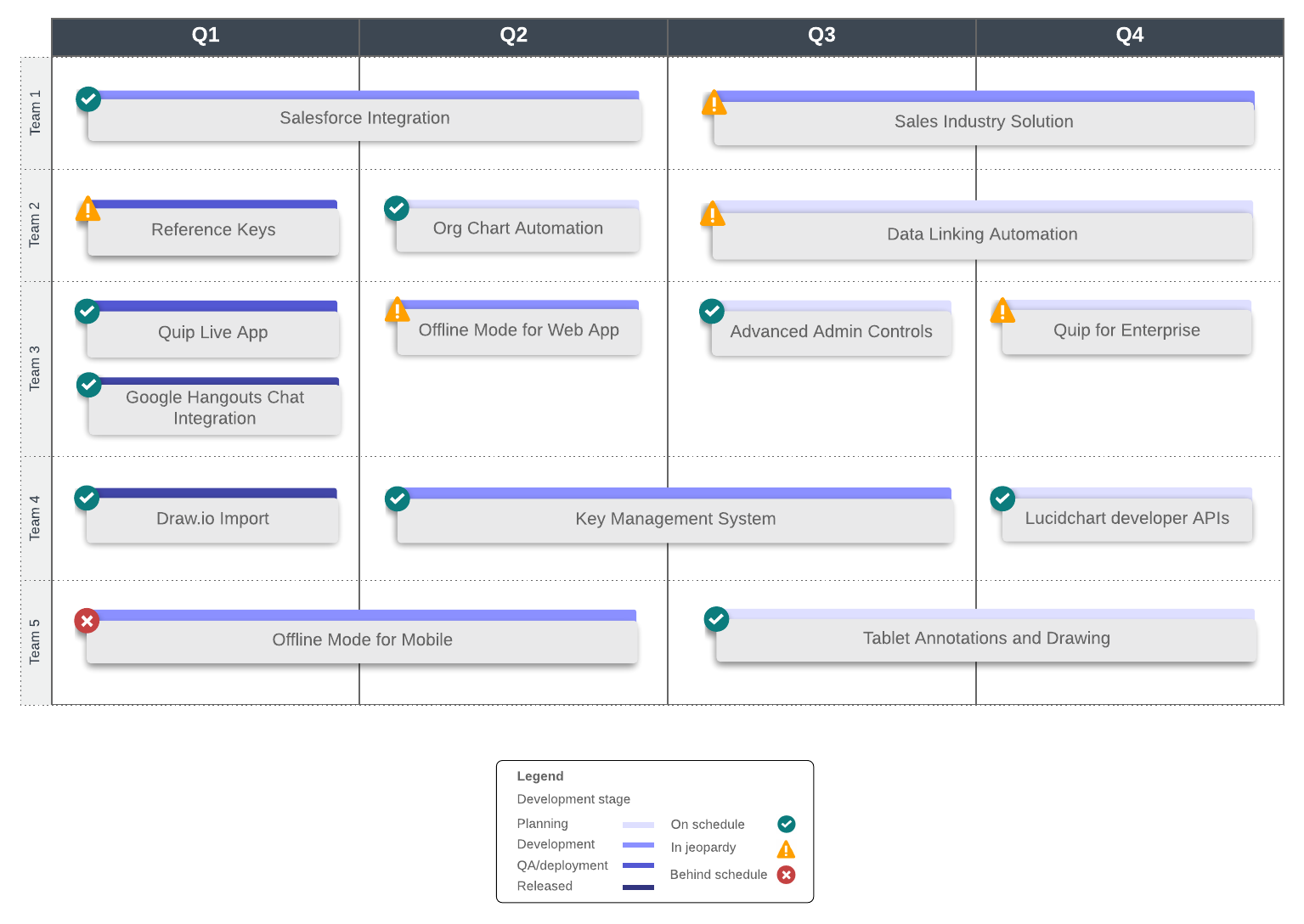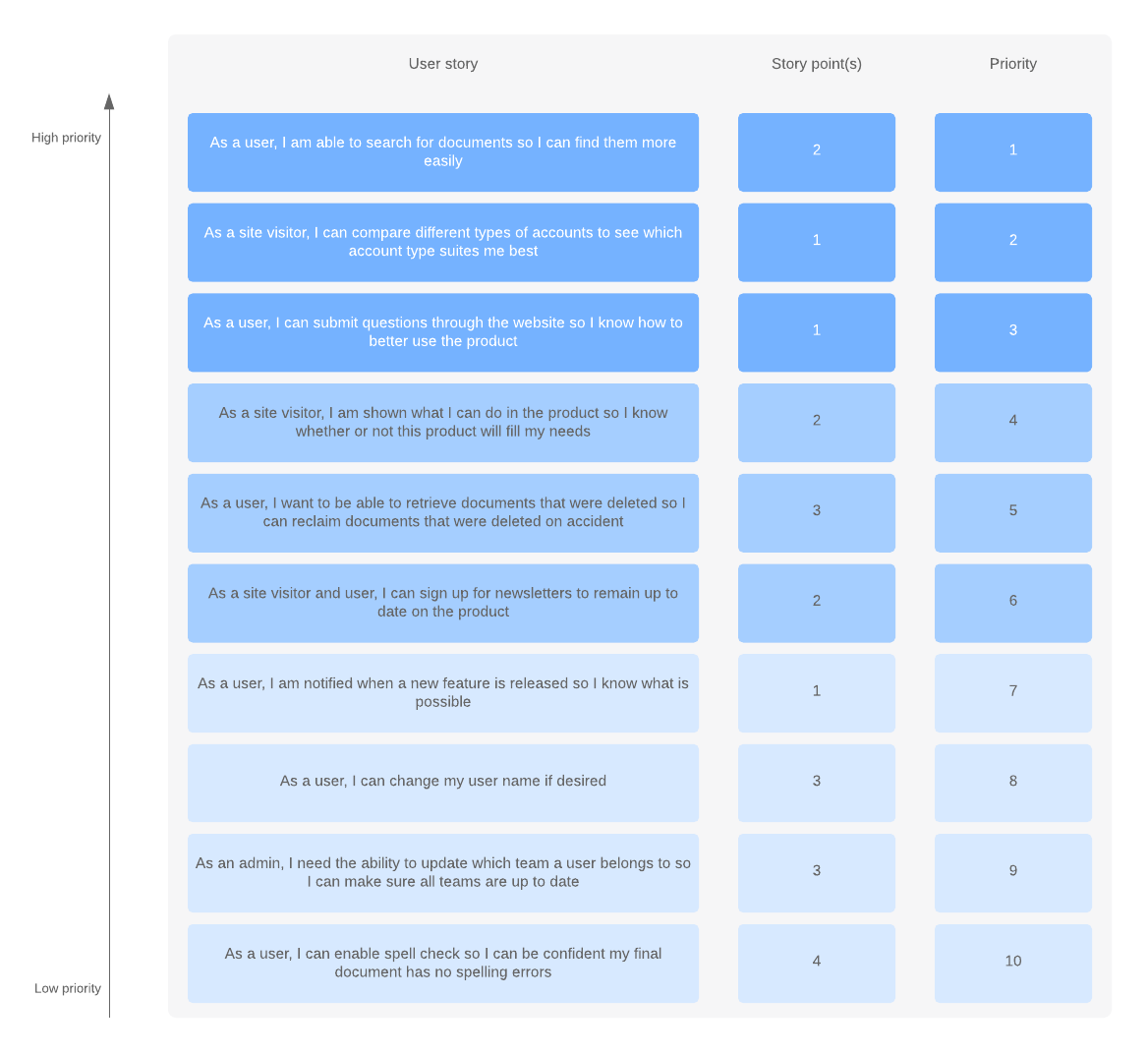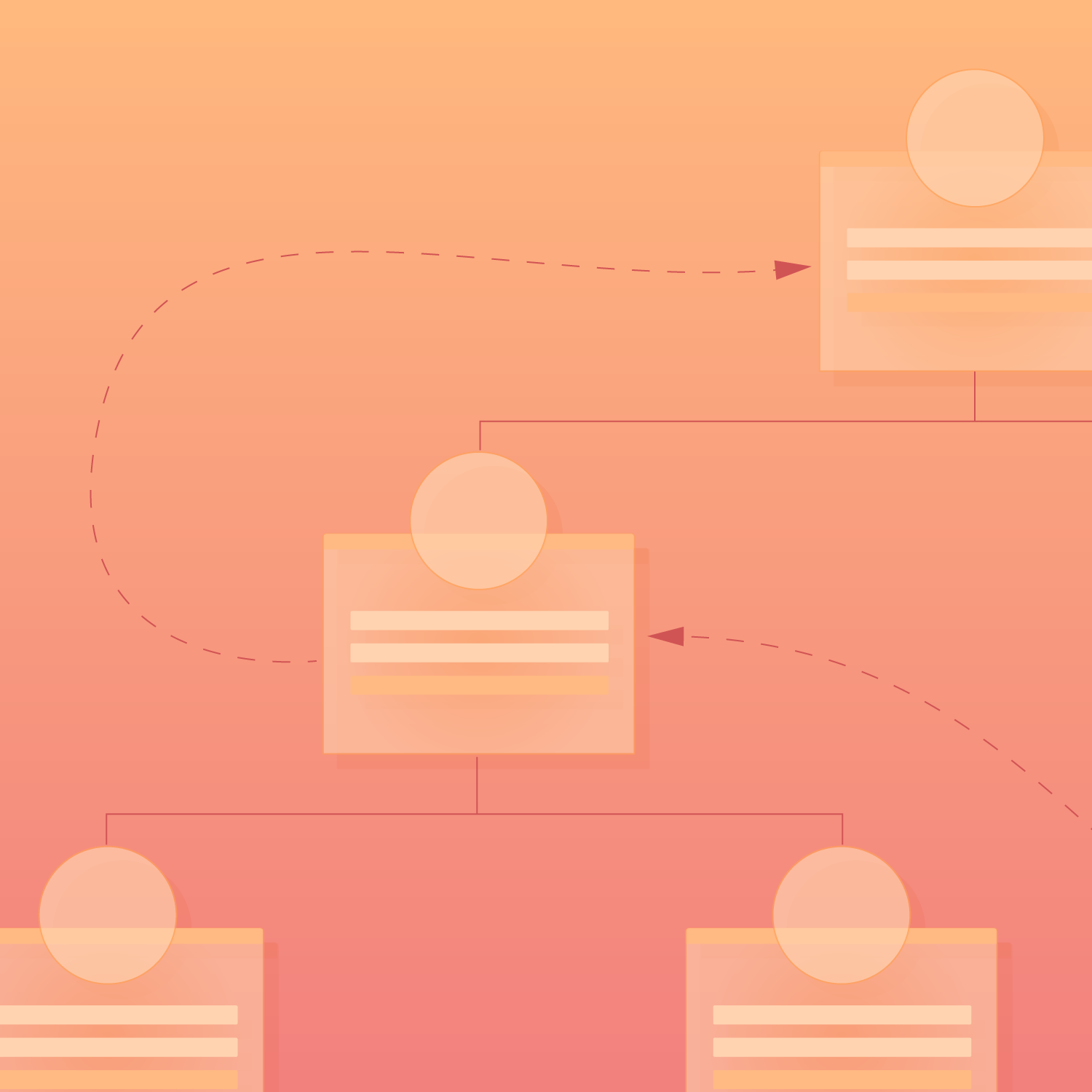
3 key disadvantages of Agile methodology (and how to avoid them)
Lucid Content
Reading time: about 6 min
Topics:
3 key disadvantages of Agile methodology
- Teams get easily sidetracked due to lack of processes
- Long-term projects suffer from incremental delivery
- The level of collaboration can be difficult to maintain
Workdays are more than 9-to-5 blocks of time—especially if you’re a project manager.
Every minute of any typical day is shaped by its share of always shifting and competing priorities, along with an ever-growing list of ongoing assignments in need of completion. Without a strategy in place, it can be difficult to gain any insight into a project’s health.
This is why many businesses have implemented the Agile methodology to their project management strategies.
Though typically associated with software development teams, the Agile methodology has now been employed with great success by many industries. For example, NPR uses Agile to create new programming. John Deere develops its latest machinery based on Agile methodology. And the venerable GE credits Agile methodology for its transformation from legendary conglomerate to “21st-century digital industrial company.”
Despite how quickly organization have come to embrace Agile processes, project managers must still consider the disadvantages of Agile methodology, either to actively find ways to avoid these pitfalls or to choose a more fitting project management methodology.
What is Agile methodology?
The Agile methodology is best known for its rejection of bureaucracy for small teams working fast and operating with autonomy. By pushing face-to-face interaction over passive communication, it was a revelation.
It all started back in 2001 when 17 technologists drafted the Agile Manifesto to counter the prevailing waterfall methodology—which required massive documentation before any coding could begin. Their four major tenets for developing better software are:
- Individuals and interactions over processes and tools
- Working software over comprehensive documentation
- Customer collaboration over contract negotiation
- Responding to change over following a plan
Once you are able to delve further and examine both the merits and disadvantages of Agile, you will be armed with all the information you need to select the best methodology for your team.
RELATED: Compare Agile vs. Waterfall vs. Kanban vs. Scrum if you're considering other project management methodologies.

Key disadvantages of Agile
When attempting to adopt an Agile methodology for an entire organization, it’s easy for missteps to occur. Taking on two-week iterations and other experimental approaches to increase production can help inspire creativity and enthusiasm—but not without risk.
Here are the three disadvantages of Agile methodology all project managers ultimately face.
1. Teams get easily sidetracked due to lack of processes
The inherent freedom and independence of the Agile methodology can be refreshing. Especially for your more self-assured software developers (or any other experienced members of your team) who welcome the idea of forging ahead with minimal planning.
However, the see-as-you-go nature of Agile also allows teams to get easily sidetracked. Often, when you proceed without sufficient documentation or a clear vision of what your final product or outcome looks like, the presence of scope creep becomes inevitable.
Once there’s no finite end in sight, measuring progress can also be a challenge.
These concerns can lead to frustrations, skipped tasks, and missed deadlines.
Solution: Find ways to measure growth and share your team’s progress
It can be as simple as setting KPIs within your Agile methodology or building a product roadmap with your team. Project management tools can help you and your team create an analytical basis for decision-making while gaining greater insight and clarification into each subsequent product launch.
Establishing requirements within your Agile framework also helps when onboarding new members to your team—letting them know any necessary project details upfront and how to better focus their attention on what matters most.

2. Long-term projects suffer from incremental delivery
With the Agile methodology, teams and organizations can bring products to market faster. Its incremental delivery style helps provide quick wins and prompt turnarounds.
However, this is also one of the disadvantages of the Agile model.
Compared to other methodologies, Agile lacks many of the checks and balances that safeguard less experienced developers and team members. Because Agile doesn’t have a formal design phase, long-term project development can be more problematic.
And since Agile is based on the premise that teams won’t always know their end result will look like (or the next few delivery cycles ahead for that matter) it also becomes difficult to accurately predict the cost, time, or resources needed at the beginning of a project.
Solution: Rank the must-have items within each sprint and act accordingly
By scoping out and prioritizing your organization’s Agile projects early on, you and your team can be in a better position to assess which opportunities are best worth pursuing.
Within the Agile methodology, every product iteration can be put through its own quality assurance and testing process. By taking a disciplined approach to maintaining your project’s Agile backlog, the tendency to haphazardly fragment output can be mitigated. This is the perfect opportunity to develop your sprint planning strategy.
When looking back at the stages of the Agile software development lifecycle, remember that remaining flexible, ready to hash out conflicts or course correct, and being open to change is what makes Agile such an effective methodology to employ in the first place.

3. The level of collaboration can be difficult to maintain
Agile is meant to be an empowering process. When it’s successfully employed, project teams are adept at self-organization and cross-functionality. However, Agile requires endless collaboration, additional time, and greater commitment.
Let's take a closer look at collaboration. To avoid the disadvantages of an Agile framework, teams must commit to the following:
- The availability of team members to conduct daily testing
- Signoff at every phase to allow developers to move ahead
- User involvement to ensure that products meet expectations
Done correctly, the Agile methodology can be an engaging and transformative system. But it demands a considerable commitment from everyone involved in your project, including your customers, for it to be successful.
Circumventing requirement analysis, design planning, and the other developmental procedures found in the more traditional methodologies outside of Agile may initially free up time. But in the absence of linear phase completion tactics, bringing your team together on a regular basis to discuss and evaluate what is working (and what is not) is paramount.
Solution: Use a scrum board to align your team
One of the most effective ways to track project status before each sprint is the scrum board. Scrum boards provide your team with a visual representations of your current sprint—including a list of in-progress tasks, prioritized backlog of product features, and any tasks being verified or tested.
With Lucidchart, you can collaborate on your scrum board in real time with team members and interface with apps like Jira and Microsoft Teams.

Avoiding the pitfalls of Agile
On the surface, Agile offers project managers a promising methodology for promoting faster project completion and a more efficient development process. But ultimately, it’s your willingness to adapt, be flexible, and collaborate with others that will make it work.
One of the best ways to promote this kind of flexibility and collaboration is to incorporate visual representations of your workflow and project management. Whether you create a product roadmap or a scrum board, you'll find it easier to keep everyone on the same page with diagrams and charts that bring much needed structure and clarity to Agile.

Make the most out of Agile with Lucidchart diagrams.
Learn howAbout Lucidchart
Lucidchart, a cloud-based intelligent diagramming application, is a core component of Lucid Software's Visual Collaboration Suite. This intuitive, cloud-based solution empowers teams to collaborate in real-time to build flowcharts, mockups, UML diagrams, customer journey maps, and more. Lucidchart propels teams forward to build the future faster. Lucid is proud to serve top businesses around the world, including customers such as Google, GE, and NBC Universal, and 99% of the Fortune 500. Lucid partners with industry leaders, including Google, Atlassian, and Microsoft. Since its founding, Lucid has received numerous awards for its products, business, and workplace culture. For more information, visit lucidchart.com.
Related articles
20 years in, the Agile Manifesto revolution continues
20 years ago, a group of professionals met at a ski resort and ushered in a revolutionary approach to software development and project management. We look back at the Agile Manifesto and lessons from it that still apply today.
Scrum board vs Kanban board: Choosing the right Agile tool
Not sure whether a Scrum board or Kanban board is best to help your development team build and release quality products faster? Learn what a Scrum board is and how it differs from a Kanban board.
